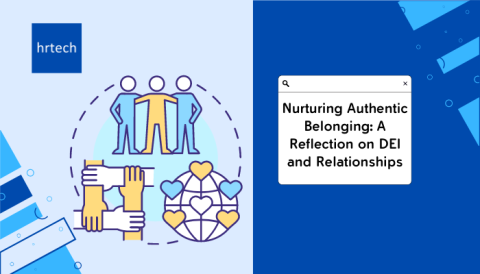The conversation around Diversity, Equity, and Inclusion (DE&I) is evolving globally, but nowhere is it more nuanced than in Asia. This vast region’s unique cultural, social, and economic fabric offers a distinct backdrop against which DE&I efforts unfold. In this blog, we explore three prevalent myths that hinder the understanding and implementation of effective DE&I strategies in Asia, shedding light on the realities that underpin a truly inclusive approach.
by Danya Atkinson
Introduction to DE&I in Asia
The Asian landscape is one of the most diverse regions in the world. Where DE&I is concerned, there is a level of complexity that needs to be taken into consideration for the region. By dispelling some of these misconceptions, we can gain a deeper understanding of why Asia’s DE&I landscape is dissimilar to the global scenario (and not slower). Let’s delve deeper!

Exploring Common Myths
1. Asia’s DE&I corporate strategy needs to echo global policy
DE&I strategies in Asia requires localization to account for the region’s diverse socio-cultural contexts. Every country has various makeups of gender, identity, race, and other segmentation. While global frameworks offer valuable insights, a blanket blueprint overlooks many intricacies existing in Asian societies. For example, an underrepresented community in India would look vastly different to an underrepresented community in China. Hierarchical structures prevalent in many Asian cultures may also require unique approaches to promoting inclusivity and empowering marginalized voices. As a result, echoing global DE&I policies aren’t enough to move the needle in Asia, and will require customization through local data-driven insights.
Not everything in global DE&I policies can be mirrored and there will be bumps in the road. Many corporations are hesitant on taking the first real step in the DE&I journey due to very public blunders. Whether in a personal or corporate context, there can be a fear of failure or being held accountable for these missteps. That being said, there are also multiple success stories and best practices that can be relayed from global DE&I policies. Realistically, your Asian DE&I strategy will come with flaws but will make strides in the right direction.
2. DE&I initiatives benefit only underrepresented communities
Quite the opposite! DE&I initiatives benefit everyone. They do not prioritize one community over the other. Aiming to level the playing field of disparities, DE&I should enable everyone to feel included and visible. When employees feel valued and respected for who they are, they experience higher levels of happiness, engagement, and job satisfaction. This sense of acceptance fosters stronger collaboration, enhances creativity and innovation, and contributes to a positive organizational culture. With greater productivity and the resulting greater financial performance, this will ultimately benefit all communities.
3. Sustainable DE&I efforts require large investments
While financial resources can certainly support DE&I initiatives, sustainable progress is more about commitment, creativity, and cultural change than monetary outlays. Organizations can achieve meaningful DE&I outcomes through a combination of resource allocation, strategic planning, and fostering a culture of inclusivity. Investing in training programs, mentorship initiatives, and community partnerships can be highly effective in promoting diversity and equity within the organization.
Additionally, prioritizing inclusive hiring practices and implementing policies that support work-life balance and employee well-being contribute to sustainable DE&I efforts without necessarily requiring substantial financial investments.
Leaders play a pivotal role in driving this cultural change by setting a clear vision, modeling inclusive behaviors, and holding individuals accountable for their actions. Even witnessing individuals from similar backgrounds achieve leadership positions sends a clear message that upward mobility and success are attainable for everyone, regardless of their demographic characteristics. This representation not only instills a sense of pride and belonging but also fosters aspirations and ambitions among employees from underrepresented communities. Moreover, it enhances the organization’s reputation as an inclusive and progressive employer, making it more attractive to top talent from diverse backgrounds.
Understanding DE&I requires dispelling misconceptions. While it’s essential to have a solid DE&I plan, it does not have to be perfect at first. Making the first step is already perfect enough. Sustainable DE&I progress in Asia does not necessarily require large financial investments; commitment, creativity, and cultural change are key, along with strategic resource allocation and fostering a culture of inclusivity.
By understanding these points, organization can create inclusive and fair workplaces for everyone. Ultimately, prioritizing DE&I is not only the right thing to do ethically but also leads to improved organizational performance, innovation, and employee satisfaction. Inclusive workplaces attract top talent and strengthen brand reputation, positioning organizations for long-term success and sustainability.
Conclusion: Moving Forward with Inclusivity
In conclusion, navigating the DE&I landscape in Asia requires a nuanced understanding of its diverse cultures and a commitment to genuine inclusivity. By addressing these myths, organizations can foster a more inclusive environment that not only respects diversity but leverages it as a strength. The journey towards DE&I is ongoing, and every step taken with consideration and respect for the local context moves us closer to a more equitable and inclusive future.
Author’s bio:
Danya is the founder and host of Undeivided – the go-to podcast for frank conversations on DE&I topics with activists, experts and everyday community leaders. By amplifying voices from underrepresented communities, Danya’s thought leadership in this domain serves a pathway to drive meaningful societal changes across Asia and beyond. Beyond her impactful podcasting endeavours, she is also a seasoned expert in talent solutions in various areas of focus including contingent workforce management and talent acquisition strategy. Armed with firsthand lived experiences, Danya approaches her work with a blend of empathy and strategic acumen. Whether she’s leading discussions on data-driven DE&I initiatives or devising innovative talent acquisition roadmaps, Danya remains steadfast in her commitment to driving progress and fostering environments where every individual is valued and empowered to thrive.
Also read: Nurturing Authentic Belonging: A Reflection on DEI and Relationships




